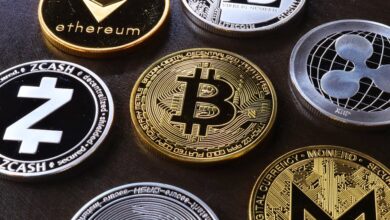Sustainable Gold Mining: Eco-friendly Practices and Ethical Investment in Gold Production

In recent years, the demand for gold has transcended its traditional role as a safe haven asset, evolving into a symbol of sustainability and ethical responsibility. As global gold demand continues to rise, the gold mining industry is facing increasing scrutiny regarding its environmental impact and social implications. This has led to the emergence of sustainable gold mining practices, which aim to reduce the ecological footprint of gold production while ensuring fair treatment for communities involved in the gold trade.
In this article, we will delve into the world of sustainable gold mining, exploring eco-friendly practices that are reshaping the landscape of gold production. We will analyze the economics of sustainable gold, examining how these practices influence gold prices and market trends, and discuss the growing importance of ethical gold investment. By highlighting the connection between sustainable methods and the value of gold collectibles and jewelry, we aim to provide insights into how responsible gold mining can enhance not only the quality of gold products but also the integrity of the gold market as a whole. Join us as we uncover the transformative potential of sustainable gold mining in shaping the future of this precious metal.
- 1. Sustainable Gold Mining: Exploring Eco-friendly Practices in Gold Production
- 2. The Economics of Sustainable Gold: Impact on Gold Prices and Market Trends
- 3. Ethical Gold Investment: How Sustainable Practices Enhance the Value of Gold Collectibles and Jewelry
1. Sustainable Gold Mining: Exploring Eco-friendly Practices in Gold Production
Sustainable gold mining is becoming increasingly important as the global demand for gold continues to rise. With the gold market trends indicating a steady increase in gold prices, investors are looking for ethical and eco-friendly practices in gold production. Sustainable gold mining focuses on minimizing environmental impact while ensuring fair labor practices and community engagement.
One major eco-friendly practice involves reducing the use of harmful chemicals typically used in gold extraction. Traditional gold mining methods often rely on toxic substances like cyanide and mercury, which can lead to severe environmental degradation. However, innovative gold technology is emerging, such as the use of biodegradable alternatives and physical gold extraction techniques that significantly lessen ecological footprints.
Additionally, gold recycling plays a crucial role in sustainable gold mining. By reclaiming gold from old jewelry, electronics, and other sources, we can reduce the need for new gold mining operations, preserving gold reserves and minimizing the environmental toll of mining activities. This practice not only contributes to sustainability but also supports the gold market by maintaining a steady supply of recycled gold, which is often considered a safe haven asset during economic uncertainty.
Moreover, central banks are increasingly recognizing the importance of sustainable practices in the gold trade. As they enhance their gold reserves, many are prioritizing gold sourced from responsible mining operations. This not only aligns with global sustainability goals but also boosts the reputation of gold as a secure investment in a volatile economic landscape, especially in times of inflation.
Investors are also becoming more discerning, favoring gold ETFs and gold futures that focus on ethically sourced gold. Luxury gold products, such as gold jewelry and collectibles, are now often marketed with an emphasis on their sustainable origins, appealing to environmentally conscious consumers.
In summary, sustainable gold mining is essential for addressing the challenges posed by traditional mining practices. By embracing eco-friendly methods, promoting gold recycling, and fostering ethical labor practices, the gold industry can meet global gold demand while preserving the planet for future generations. As gold continues to be a valuable asset, the shift towards sustainable practices will play a pivotal role in shaping the future of gold production and investment.
2. The Economics of Sustainable Gold: Impact on Gold Prices and Market Trends
The economics of sustainable gold mining significantly influences gold prices and market trends, reflecting a growing awareness of environmental and ethical practices in gold production. As consumers become increasingly concerned about the origins of their gold, demand for sustainably sourced gold is gaining traction. This shift is shaping the dynamics of the gold market, affecting everything from gold investment strategies to gold market analysis.
Sustainable gold mining practices often lead to higher production costs due to the implementation of eco-friendly technologies and responsible sourcing methods. These costs can impact gold prices, as producers may need to pass on expenses to consumers. However, the premium associated with sustainably mined gold can attract a niche market willing to pay more for ethically sourced gold jewelry, gold coins, and other collectibles.
Moreover, as central banks and institutional investors recognize the importance of sustainable practices, they are increasingly integrating these considerations into their gold reserves and investment strategies. This alignment can enhance the perception of gold as a safe haven asset, particularly in times of economic uncertainty, where gold and inflation often intersect. For instance, gold ETFs and gold futures that focus on sustainable mining practices are emerging, allowing investors to support eco-friendly initiatives while diversifying their portfolios.
Additionally, the rise of gold recycling is contributing to the sustainable gold narrative. By repurposing existing gold reserves, the industry can reduce the need for new mining, which in turn lessens the environmental impact and helps stabilize gold prices. This practice not only meets global gold demand but also aligns with consumer preferences for ethically sourced materials.
As luxury gold items and high-quality gold bullion become more popular, the market is responding to these trends by promoting products that are both beautiful and ethically responsible. This shift in consumer behavior is evident in the rise of gold coins investing and the growing interest in gold collectibles that boast sustainable origins.
In summary, the economics of sustainable gold mining is reshaping gold market trends, influencing gold prices, and driving investments toward eco-friendly practices. As consumers, investors, and central banks prioritize sustainability, the future of gold production will likely reflect these values, creating a more responsible gold trade that balances profitability with ethical considerations.
3. Ethical Gold Investment: How Sustainable Practices Enhance the Value of Gold Collectibles and Jewelry
In recent years, ethical gold investment has gained significant traction, driven by increasing awareness of sustainable practices in gold mining. As consumers become more conscious of the environmental and social impacts of their purchases, the demand for ethically sourced gold has surged. This shift not only enhances the value of gold collectibles and jewelry but also aligns with broader trends in the gold market.
Investing in sustainable gold mining is a pivotal factor in enhancing the value of gold. When gold production adheres to eco-friendly practices, it reduces the negative impact on the environment and local communities. This commitment to sustainability resonates with investors looking for safe haven assets that reflect their values. As a result, gold jewelry and collectibles that are certified as ethically sourced often command higher prices in the market due to their rarity and the added assurance of responsible sourcing.
Moreover, as global gold demand continues to rise, ethical sourcing can help stabilize gold prices in the long term. With central banks increasing their gold reserves and the growing interest in gold ETFs and gold futures, the emphasis on sustainable practices can positively influence market trends. By investing in ethically sourced gold, collectors and investors not only contribute to a more responsible gold trade but also position themselves to benefit from potential price appreciation.
The rise of gold recycling and innovative gold technology also plays a crucial role in this landscape. By repurposing existing gold, investors can help reduce the need for new gold mining, thus mitigating the environmental impact. This practice not only preserves the value of physical gold but also aligns with the preferences of today’s environmentally conscious consumers.
In addition, as gold and cryptocurrency continue to capture investor attention, the ethical considerations in gold mining become even more relevant. The allure of luxury gold items and gold coins investing can be enhanced by the assurance that these products are sourced sustainably. As consumers seek out gold collectibles and jewelry that reflect their values, the market will likely continue to evolve, highlighting the importance of ethical practices in the gold production process.
In summary, ethical gold investment is not just a trend; it represents a fundamental shift in the gold market. By prioritizing sustainable gold mining practices, investors can enhance the value of their gold collectibles and jewelry, positively impact gold prices, and contribute to a more responsible gold trade. This focus on ethical sourcing aligns with the growing demand for transparency and integrity in the gold market, making it an essential consideration for today’s investors.
In conclusion, sustainable gold mining is not just a trend but a necessary evolution in the gold production industry. As we have explored, eco-friendly practices are reshaping how gold is mined and processed, providing a pathway to minimize environmental impact while maintaining economic viability. The intersection of sustainable practices and gold economics reveals that ethical gold investment is becoming increasingly attractive to consumers and investors alike, influencing gold prices and shaping market trends.
Investors are now recognizing that gold, particularly physical gold, and luxury gold items like gold jewelry and collectibles, hold enhanced value when sourced from sustainable operations. This shift is critical, especially as global gold demand surges and central banks continue to accumulate gold reserves as a safe haven asset amidst economic uncertainty and inflation.
As gold technology advances and the market adapts, opportunities for gold recycling and refining will further support sustainable practices, reducing the need for gold smuggling and illicit trade. The growing interest in gold ETFs and futures, as well as the integration of gold and cryptocurrency, signifies a broader recognition of gold’s enduring value in a dynamic financial landscape.
Ultimately, embracing sustainable gold mining not only fosters ethical investment practices but also secures the future of this precious metal in a way that aligns with our environmental and social responsibilities. Whether through gold coins investing or adding gold bullion to your portfolio, it is essential to consider the impact of your gold investment choices on the world.
References:
[Insert relevant references here]




